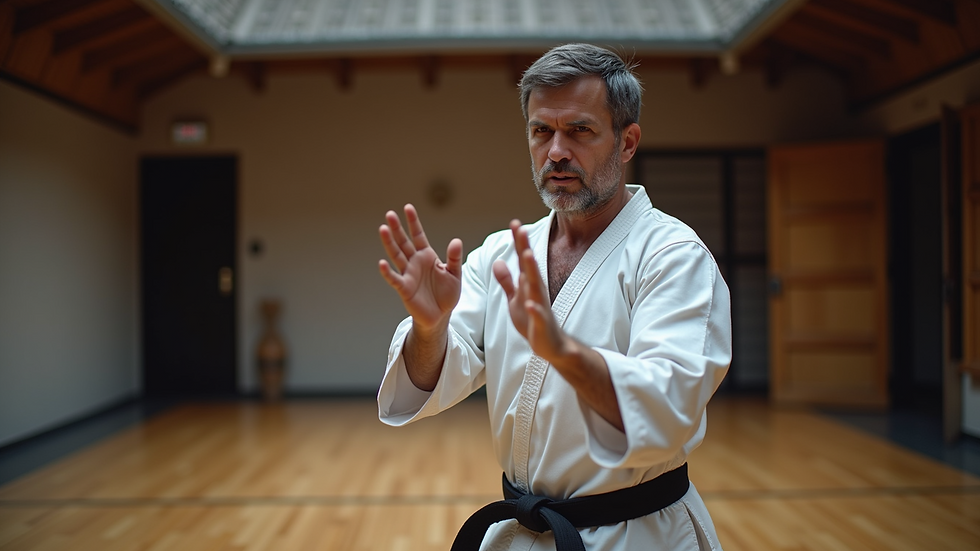What to Look for in a Martial Arts Insurance Policy
- psurestart
- Sep 29
- 3 min read
When practicing or teaching martial arts, having the right insurance policy is essential. Martial arts involve physical contact and sometimes risky moves, so protecting yourself, your students, and your business is crucial. Choosing the right martial arts policy can be confusing, but understanding what to look for will help you make the best decision.
Understanding the Basics of a Martial Arts Policy
A martial arts policy is designed to cover the unique risks associated with martial arts training and instruction. Unlike general liability insurance, this policy specifically addresses injuries, accidents, and claims that can arise during martial arts activities.
Key components to consider include:
Public Liability: Covers injuries to third parties or damage to their property.
Professional Indemnity: Protects against claims of negligence or mistakes in instruction.
Member to Member Indemnity: The Insurer will indemnify member or members of the Association in their respective capacities as such as though each party was
individually named as the Insured in the Indemnity Section.
Personal Accident: Provides compensation for injuries sustained by the insured, in most cases this Cover is only available for Instructors.
Equipment Coverage: Protects training gear and facilities from damage or theft.
For example, if a student injures themselves during a class, public liability insurance can cover medical costs or legal fees if a claim is made. Similarly, professional indemnity protects instructors if a student alleges poor teaching caused an injury.

What to Look for in a Martial Arts Policy
When selecting a martial arts policy, there are several important factors to keep in mind to ensure comprehensive coverage.
1. Coverage Limits
Check the maximum amount the insurer will pay out for claims. Higher limits provide better protection, especially if you run a large school or host tournaments. Typical limits range from £1 million, £2 million, £5 million up to £10 million.
2. Types of Activities Covered
Make sure the policy covers all the martial arts styles and activities you offer. Some policies exclude certain disciplines or competitive events, so verify this before purchasing.
3. Instructor and Student Coverage
The policy should cover both instructors and students during training sessions, competitions, and demonstrations. This includes coverage for injuries and legal claims.
4. Equipment and Property Protection
If you own expensive mats, weapons, or uniforms, check if the policy covers damage or theft of these items.
5. Legal Expenses
Legal fees can be costly if you face a claim. Look for policies that include legal expense coverage to help with defence costs.
6. Flexibility and Add-ons
Some insurers offer add-ons like business interruption cover or cyber liability. Consider your specific needs and whether these extras are beneficial.
7. Exclusions and Limitations
Read the fine print carefully. Common exclusions include injuries from reckless behaviour or unapproved events. Understanding these will prevent surprises later.

How to Choose the Best Martial Arts Insurance
Finding the best martial arts insurance means balancing cost with coverage. Here are some practical tips:
Compare Multiple Quotes: Don’t settle for the first offer. Compare policies from different providers.
Check Reviews and Reputation: Look for insurers with good customer service and claims handling.
Ask About Discounts: Some insurers offer discounts for multiple policies or long-term customers.
Consult with Experts: Speak to insurance brokers who specialise in martial arts coverage.
Review Annually: Your needs may change, so review your policy every year.
One reliable option is the best martial arts insurance available through specialist providers who understand the unique risks of martial arts.
Additional Tips for Martial Arts Instructors and Schools
Running a martial arts school involves more than just insurance. Here are some extra tips to reduce risks and improve safety:
Implement Safety Protocols: Regularly update training methods and safety rules.
Keep Records: Document injuries and incidents to help with claims.
Train Staff: Ensure all instructors are qualified and aware of safety standards.
Use Membership Forms: Have students completed & signed a Membership Form, acknowledging and understand the risks involved with your style of Martial Arts.
Maintain Equipment: Regularly inspect and replace worn-out gear.
These steps not only protect your students but also strengthen your insurance claims if needed.

Protecting Your Passion with the Right Policy
Choosing the right martial arts policy is about more than just compliance - it’s about protecting your passion and livelihood. Whether you are an instructor, school owner, or competitor, having the right insurance gives peace of mind and financial security.
By understanding coverage options, comparing policies, and taking proactive safety measures, you can focus on what matters most - training and growing in martial arts.
Remember, the best martial arts insurance is one that fits your specific needs and offers reliable support when you need it most. Take the time to research and invest wisely in your protection.


Comments